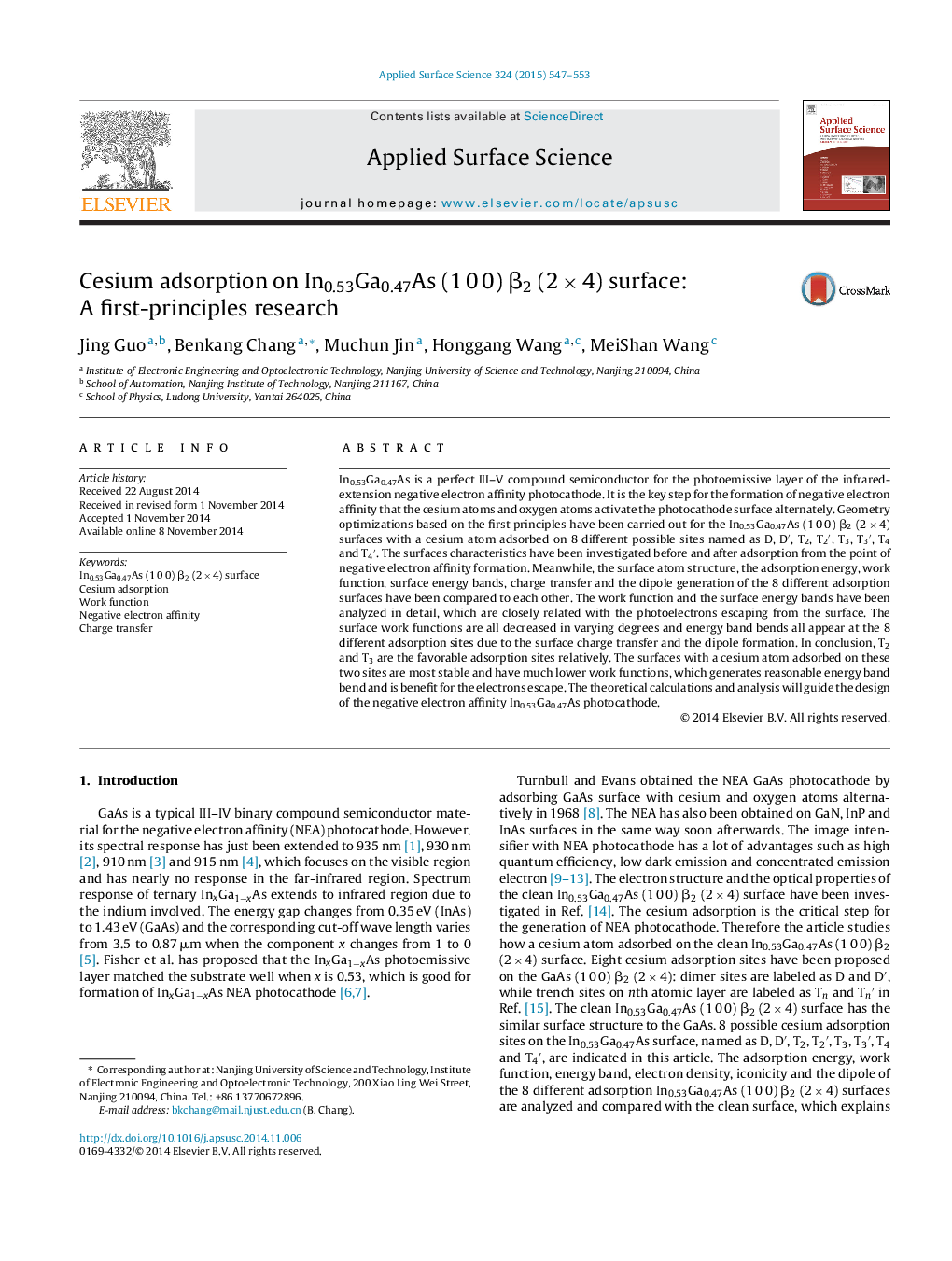| Article ID | Journal | Published Year | Pages | File Type |
|---|---|---|---|---|
| 5349063 | Applied Surface Science | 2015 | 7 Pages |
Abstract
In0.53Ga0.47As is a perfect III-V compound semiconductor for the photoemissive layer of the infrared-extension negative electron affinity photocathode. It is the key step for the formation of negative electron affinity that the cesium atoms and oxygen atoms activate the photocathode surface alternately. Geometry optimizations based on the first principles have been carried out for the In0.53Ga0.47As (1 0 0) β2 (2 Ã 4) surfaces with a cesium atom adsorbed on 8 different possible sites named as D, Dâ², T2, T2â², T3, T3â², T4 and T4â². The surfaces characteristics have been investigated before and after adsorption from the point of negative electron affinity formation. Meanwhile, the surface atom structure, the adsorption energy, work function, surface energy bands, charge transfer and the dipole generation of the 8 different adsorption surfaces have been compared to each other. The work function and the surface energy bands have been analyzed in detail, which are closely related with the photoelectrons escaping from the surface. The surface work functions are all decreased in varying degrees and energy band bends all appear at the 8 different adsorption sites due to the surface charge transfer and the dipole formation. In conclusion, T2 and T3 are the favorable adsorption sites relatively. The surfaces with a cesium atom adsorbed on these two sites are most stable and have much lower work functions, which generates reasonable energy band bend and is benefit for the electrons escape. The theoretical calculations and analysis will guide the design of the negative electron affinity In0.53Ga0.47As photocathode.
Related Topics
Physical Sciences and Engineering
Chemistry
Physical and Theoretical Chemistry
Authors
Jing Guo, Benkang Chang, Muchun Jin, Honggang Wang, MeiShan Wang,
